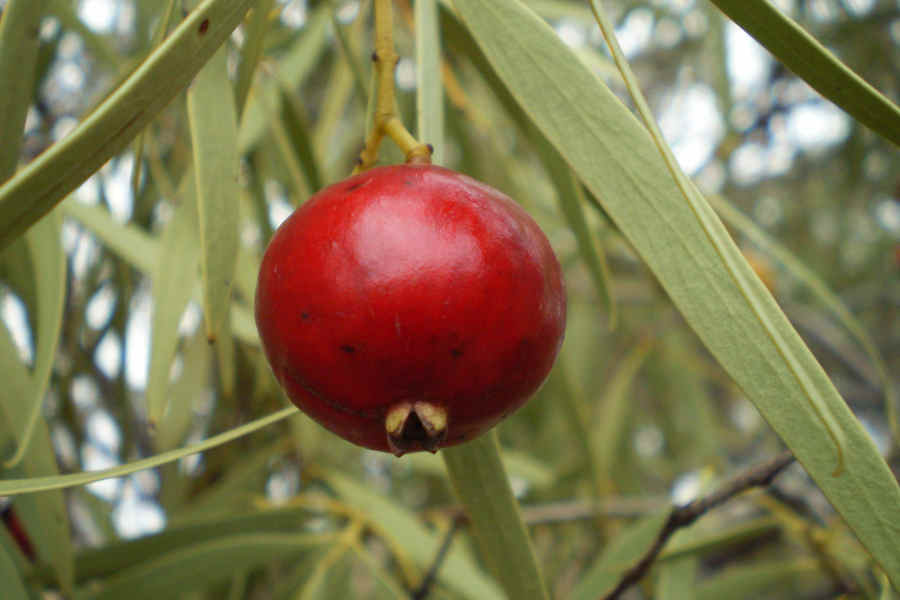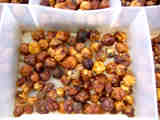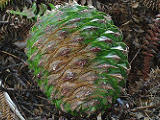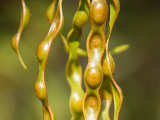9 Australian Native Ingredients To Make Regulars In Your Kitchen

Bush tucker makes sense from so many perspectives, it’s hard to believe more of us aren’t looking a little closer to home when we think of broadening our dietary horizons.
As well as the obvious flavour and nutritional benefits, you can feel serenely satisfied that your indulgence supports local industries and brings a lighter tread to that annoying guilt trip most of us know as our ‘ecological footprint’.
Now no-one’s suggesting you need forage the wilds for your feasts (unless you really feel like it), so here’s nine Australian indigenous ingredients that should be relatively easy to find in food aisles, speciality shops and produce markets.
Macadamia Nuts
 The much loved macadamia nut is a rainforest native of North East Australia. Rich in energy, fibre, B-vitamins and essential minerals like selenium, macadamias are known for their sweet, subtle flavour and are popularly eaten simply shelled and roasted.
They’re surprisingly versatile in the kitchen though and give an excellent nutritional kick to anything from decadent desserts to crunchy salads.
The much loved macadamia nut is a rainforest native of North East Australia. Rich in energy, fibre, B-vitamins and essential minerals like selenium, macadamias are known for their sweet, subtle flavour and are popularly eaten simply shelled and roasted.
They’re surprisingly versatile in the kitchen though and give an excellent nutritional kick to anything from decadent desserts to crunchy salads.
Try: White Chocolate and Macadamia Brownies.
Bush Tomatoes
 As a close relative of common agriculturally produced tomato varieties, the arid-dwelling native bush tomato has a stronger sun-dried tomato or tamarillo flavour to it.
They’re a rich source of potassium and vitamin C and complement other strong flavours like cheeses and gamey meats well.
As a close relative of common agriculturally produced tomato varieties, the arid-dwelling native bush tomato has a stronger sun-dried tomato or tamarillo flavour to it.
They’re a rich source of potassium and vitamin C and complement other strong flavours like cheeses and gamey meats well.
Try: Pork Pie with Bush Tomato.
Bunya Nuts
 Bunya nuts are the edible kernels inside the cones from giant coniferous Bunya Nut Pine trees, native to Queensland. Sweet and nutty in flavour, they have a rather starchy chestnut-like flesh that lends well to being processed into flours and pastes.
Bunya nuts are a rich, gluten-free source of carbohydrate and protein.
Bunya nuts are the edible kernels inside the cones from giant coniferous Bunya Nut Pine trees, native to Queensland. Sweet and nutty in flavour, they have a rather starchy chestnut-like flesh that lends well to being processed into flours and pastes.
Bunya nuts are a rich, gluten-free source of carbohydrate and protein.
Try: Bunya Nut Pesto.
Wattle Seed
 There’s no less than 120 species of Australian Acacia with the edible seeds collectively referred to as ‘wattleseed’. Chocolate, coffee and hazelnuts are all flavours frequently used to describe wattleseeds which, as well
as being prized for their flavour, are also celebrated for their low glycemic index and high levels of potassium, iron and zinc.
There’s no less than 120 species of Australian Acacia with the edible seeds collectively referred to as ‘wattleseed’. Chocolate, coffee and hazelnuts are all flavours frequently used to describe wattleseeds which, as well
as being prized for their flavour, are also celebrated for their low glycemic index and high levels of potassium, iron and zinc.
Try: Strawberry and Wattleseed Pie.
Kangaroo
 Yes, you may have a soft spot for ‘roo as a cherished national emblem, but Kangaroo meat has long been widely consumed by gourmands across its homeland. It’s made its mark in recent times as a lean, sustainable and highly nutritious alternative to beef and other red meats.
The characteristic gamey flavours work well in sweet marinades and curries.
Yes, you may have a soft spot for ‘roo as a cherished national emblem, but Kangaroo meat has long been widely consumed by gourmands across its homeland. It’s made its mark in recent times as a lean, sustainable and highly nutritious alternative to beef and other red meats.
The characteristic gamey flavours work well in sweet marinades and curries.
Try: Kangaroo Carpaccio.
Lemon Myrtle
 Likely the most well-known of native herbs, Lemon Myrtle complements a plethora of more conventional ingredients by adding citrusy aromas and flavour.
Naturally occurring in sub-tropical Northern NSW and Queensland, the Lemon Myrtle shrub is commonly grown in back yards for its blossom and year-round fragrant leaves.
Likely the most well-known of native herbs, Lemon Myrtle complements a plethora of more conventional ingredients by adding citrusy aromas and flavour.
Naturally occurring in sub-tropical Northern NSW and Queensland, the Lemon Myrtle shrub is commonly grown in back yards for its blossom and year-round fragrant leaves.
Try: Lemon Myrtle Cheesecake.
Finger Limes
 Another sub-tropical rainforest dweller, the Citrus Australasica - or finger lime - has a caviar-like consistency and acidic juices similar to the more commonly known key lime, hence its name.
Its unusual looking flesh makes for a great garnish and can be frozen without loss of texture.
Another sub-tropical rainforest dweller, the Citrus Australasica - or finger lime - has a caviar-like consistency and acidic juices similar to the more commonly known key lime, hence its name.
Its unusual looking flesh makes for a great garnish and can be frozen without loss of texture.
Try: Finger Lime Ice Cream Cup Cakes.
Quandong
 Known as the ‘native peach’, quandongs are edible fruits from the desert-dwelling Santalum acuminatum shrub. They’re packed full of vitamin C and can be dried or frozen without notable flavour loss, making them usefully available year-round.
Quandongs are commonly used in jams, chutneys and desserts where sweeter flavours soften their tartness.
Known as the ‘native peach’, quandongs are edible fruits from the desert-dwelling Santalum acuminatum shrub. They’re packed full of vitamin C and can be dried or frozen without notable flavour loss, making them usefully available year-round.
Quandongs are commonly used in jams, chutneys and desserts where sweeter flavours soften their tartness.
Try: Quandong & Blackcurrant Croustade.
Mud Crabs
 Australia has two native species of mainly mangrove-dwelling mud crab, the East Coast giant Scylla serrata and the smaller Orange Mud Crab, found on the North Western coast of WA.
Preparing and eating a mud crab is definitely a labour of love, but well worth the time and effort for a freshly caught and subtly dressed specimen.
Australia has two native species of mainly mangrove-dwelling mud crab, the East Coast giant Scylla serrata and the smaller Orange Mud Crab, found on the North Western coast of WA.
Preparing and eating a mud crab is definitely a labour of love, but well worth the time and effort for a freshly caught and subtly dressed specimen.
Try: Salt and Pepper Mud Crab.
